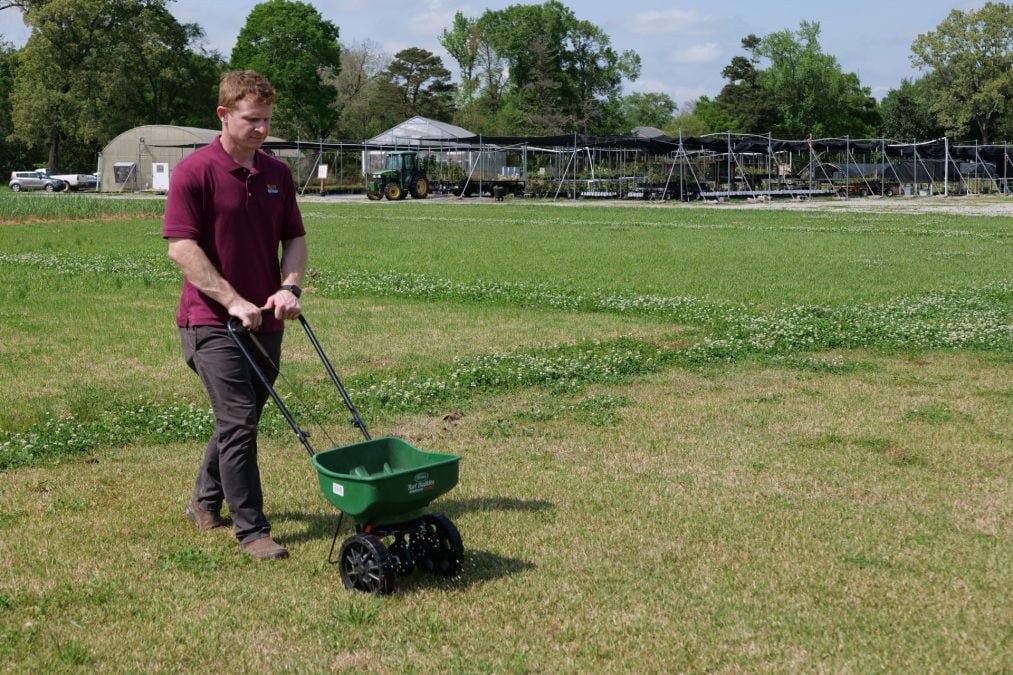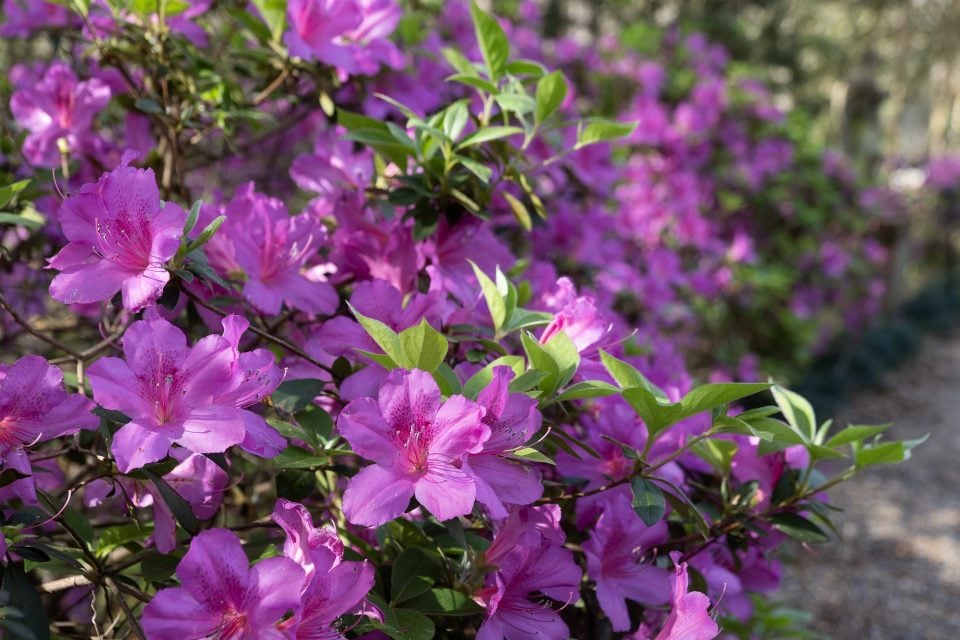
Ten inspiring reads for aspiring green thumbs
April 25, 2025
LDI earns National Accreditation and takes on leadership roles to help strengthen insurance markets
April 26, 2025By now, you’ve probably had to crank up the lawnmower and give your lawn its first cut in a while.
Turfgrasses are emerging from their winter dormancy, turning green and growing once again — and so are warm-season weeds. As you get back into the habit of lawn maintenance this spring, think about helping your grass along with a dose of fertilizer sometime soon. Now also is the perfect opportunity to get a handle on weeds while they are small and easier to control.
You can buy combination weed-and-feed products at garden centers and hardware stores. But Eric DeBoer, an assistant professor of turfgrass management with the LSU AgCenter, recommends handling the tasks of weed control and fertilization with separate products.
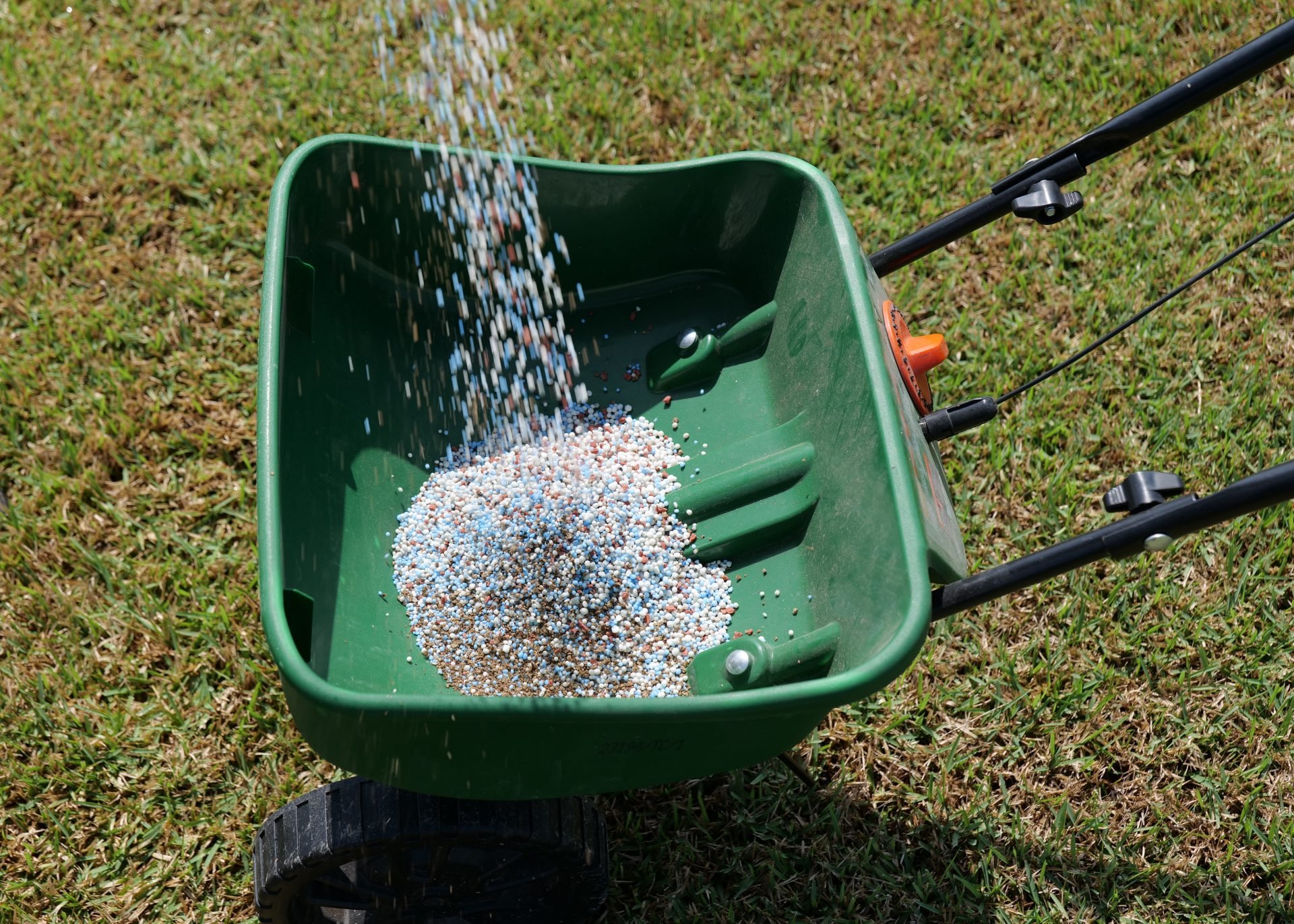
Now is a good time to fertilize lawns and treat weeds.
Photo by Randy LaBauve/LSU AgCenter
Before you start, you need to do a few things. First, get your hands on a broadcast spreader for applying granular fertilizers and herbicides. If you want to use a herbicide that’s meant to be sprayed, you may need to locate a sprayer; some of these products come in containers with built-in sprayers or can be connected to a garden hose.
Next, you should determine how big your yard is — you need to know how much product to buy. And you need to know what kind of grass — or grasses — and weeds are growing in your yard. This information not only will allow you to select the most effective fertilizer and herbicide products for your situation. It also will help you avoid damaging your lawn, as some products are not safe for use on certain grasses.
Visit www.LSUAgCenter.com/turfgrass for guides that can help you identify common lawn weeds and differentiate between popular turfgrass species such as St. Augustinegrass, centipedegrass, bermudagrass and zoysiagrass. These pages also provide suggested fertilization rates for different grasses and cultural and chemical weed control strategies.
When it comes to controlling weeds, your focus right now should be treating newly germinated warm-season weeds with a post-emergence herbicide. Mature cool-season weeds like chickweed and annual bluegrass should be removed by hand pulling or mowing at this point. They will die back soon as temperatures continue to climb.
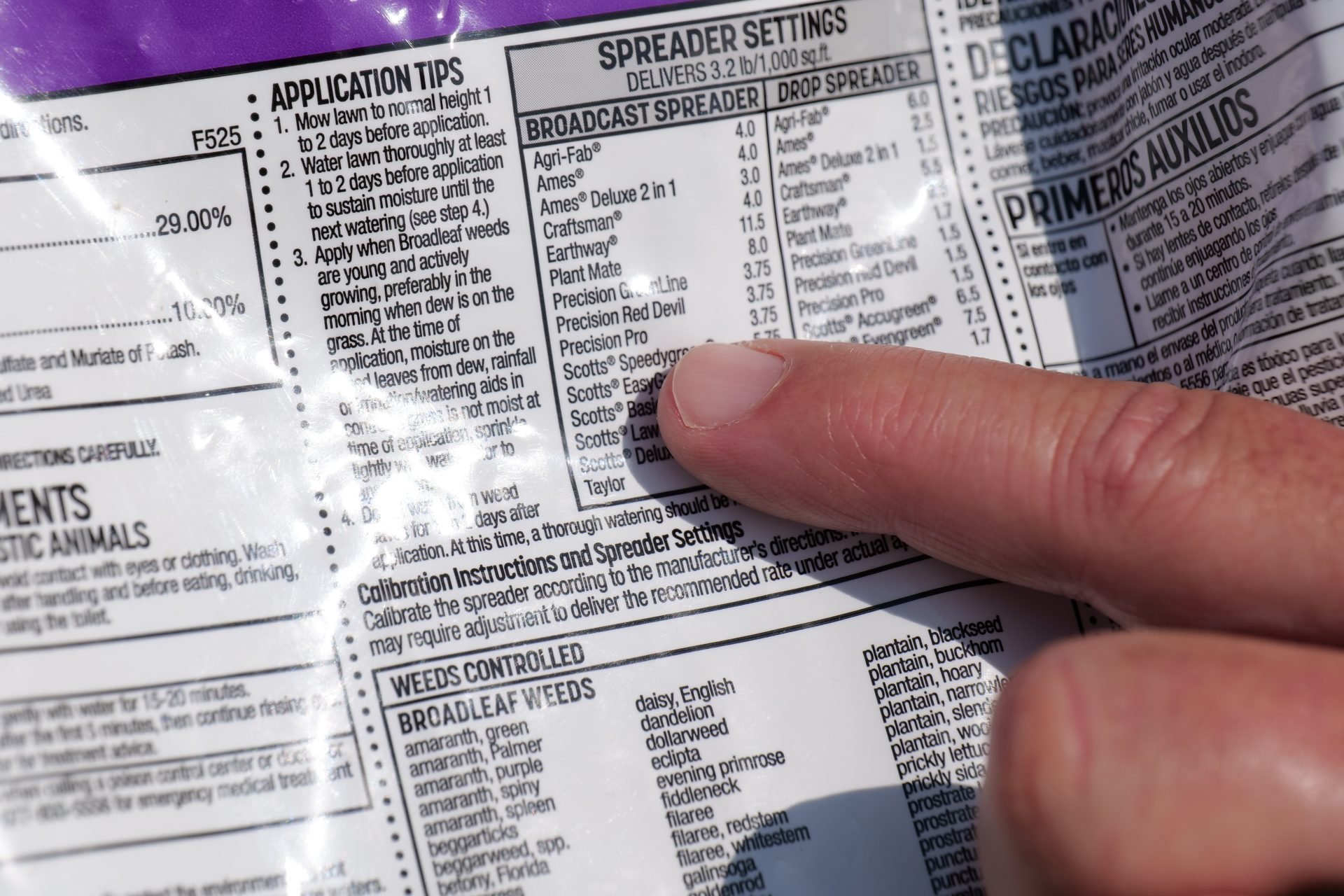
Carefully read label directions to determine the correct application rate.
Photo by Randy LaBauve/LSU AgCenter
To prevent an infestation of warm-season weeds later on, it’s important to apply herbicide now while they are young and tender.
“A more mature weed is always going to be more difficult to control than a weed that’s freshly germinated,” DeBoer said.
Carefully read the label directions of the product you intend to apply. Labels will tell you which weeds the product is labeled for, which grasses it can safely be used on and other critical details.
“A lot of herbicides will have directions saying not to spray if the ambient temperature is 85 degrees or warmer, so you have to pay attention to the outdoor temperature,” DeBoer said.
Also be mindful of application instructions. Herbicides come in liquid and granular forms. If you’re using a granular product, the label likely will direct you to apply it after you’ve irrigated the yard or following rain or heavy dew.
“The idea is that the granules stick to the leaves to deliver the herbicide,” DeBoer said.
On the fertilization front, carefully following directions is important, too. Read the product label to see how much should be applied to your yard and adjust the dial on your spreader accordingly to set the correct application rate.
There are lots of formulations of fertilizer out there. DeBoer suggests looking for something that is higher in nitrogen and lower in other nutrients such as phosphorous.
“Nitrogen is the most important nutrient to get out in the spring,” he said.
Keep up with regular mowing and irrigate as needed as spring and summer wear on. Along with fertilization, these steps promote a healthy, vigorously growing lawn that can outcompete unattractive weeds.
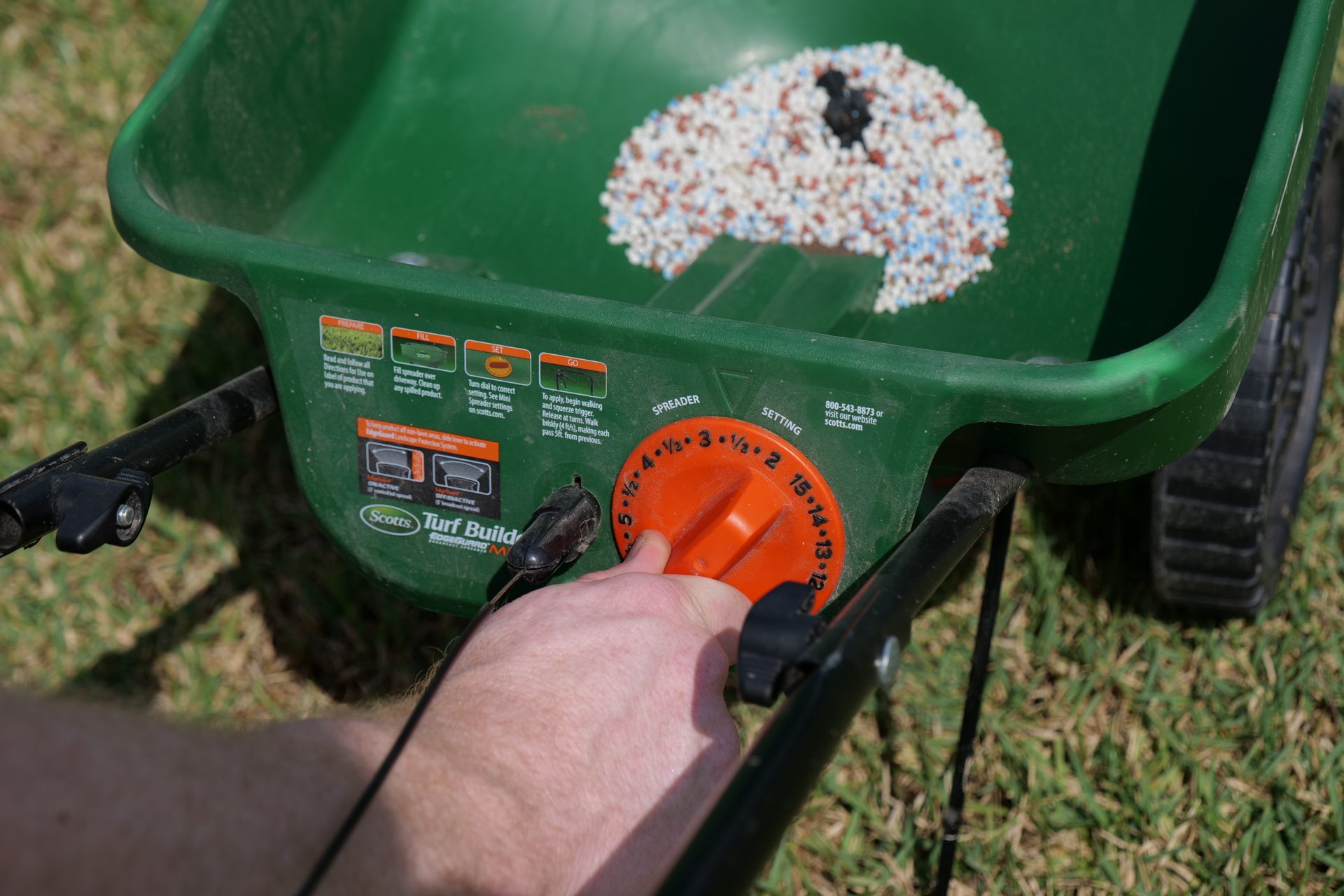
Use the dial to set the spreader to the correct application rate.
Photo by Randy LaBauve/LSU AgCenter

